
AIRCRAFT KEYS.

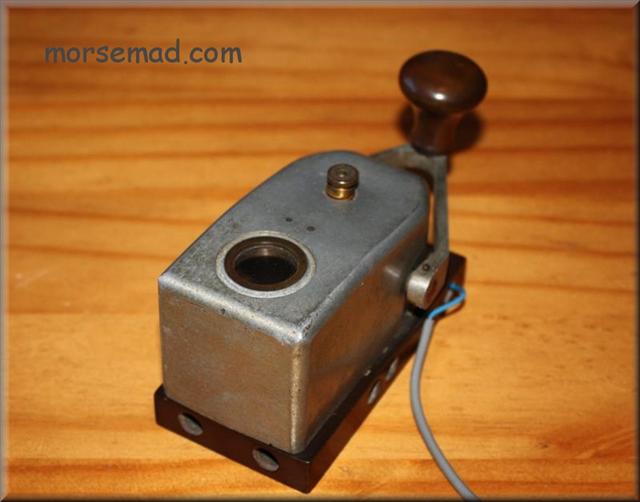 AF229..... S.G.Brown Air Ministry REF 1969 Flameproof key with its own Spark Gap ! circa about 1910. (See Morsum Magnificat magazine MM25). This fine key has the serial number 229 stamped in two places on the main frame. A highly collectable and rare key.
AF229..... S.G.Brown Air Ministry REF 1969 Flameproof key with its own Spark Gap ! circa about 1910. (See Morsum Magnificat magazine MM25). This fine key has the serial number 229 stamped in two places on the main frame. A highly collectable and rare key.
The Royal Air Force was formed from the Air Ministry in 1918.
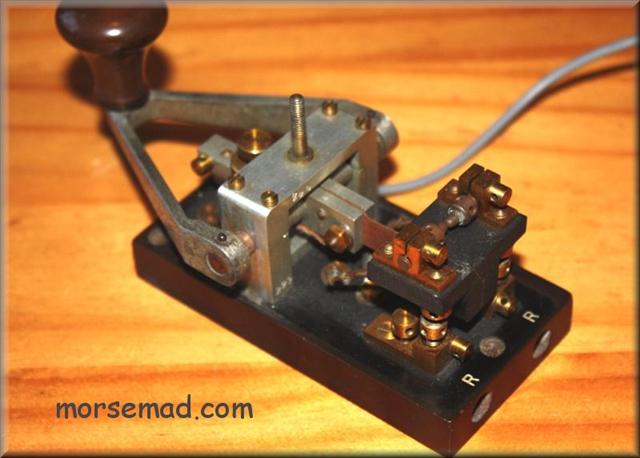 AF229..... To the right is a view of the internal layout. One set of main contacts at the front and two sets of auxilliary contacts at the back, plus adjustable spark-gap on the top of the key.
AF229..... To the right is a view of the internal layout. One set of main contacts at the front and two sets of auxilliary contacts at the back, plus adjustable spark-gap on the top of the key.
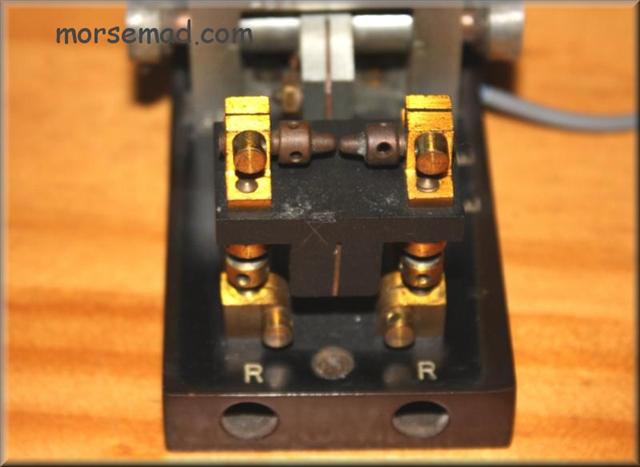 AF229..... On the left is a closeup of the spark gap. The spark could be viewed through the round mica disc in the top of the cover.The use of this type of key remains rather a mystery.
AF229..... On the left is a closeup of the spark gap. The spark could be viewed through the round mica disc in the top of the cover.The use of this type of key remains rather a mystery.
Malcolm / G4YMB adds this interesting information: "I puzzled for ages about the spark indicator and eventually an old timer came up with an explanation that was feasible. He said that the spark indicator was on a seperate circuit to the key and was actually connected to the aerial.The reason for this was that these keys were indeed used in balloons at some stage. The balloons were hydrogen filled and the purpose of the spark indicator was to detect the presence of static electricity, lightning etc. because they don,t mix so well with the hydrogen! He also said that they were used in some aircraft with the same set up for the same purpose. When you look at the connections on the key this does look plausible". "Malcolm G4YMB".

 045..... A French DYNA Aircraft key. Reputed to be from a Caravelle aircraft that first went into service in 1955.
045..... A French DYNA Aircraft key. Reputed to be from a Caravelle aircraft that first went into service in 1955.
Dyna Info by Christian Chefnay in French
Dyna Info by Christian Chefnay in English

 046..... A French SAREM key . Circa 1930's. Used with transmitter-receiver types 3-11 & 3-12C. (See MM29 page 25).
046..... A French SAREM key . Circa 1930's. Used with transmitter-receiver types 3-11 & 3-12C. (See MM29 page 25).
_files/barface.gif)
 060..... American J-7 Aircraft key dated 1921, with winker light aimed back at the operator. A rare key.
060..... American J-7 Aircraft key dated 1921, with winker light aimed back at the operator. A rare key.
"These keys were made from 1918 through 1945 by L.S.Brach in Newark, NJ, and manufactured by General Radio Corp. As for J7 and J-7-A Aircraft Keys with a Winker Lamp, a radioman could see if his transmittion was on the air - the lamp had weak inductive connection with the antenna. 73 UA3AO".

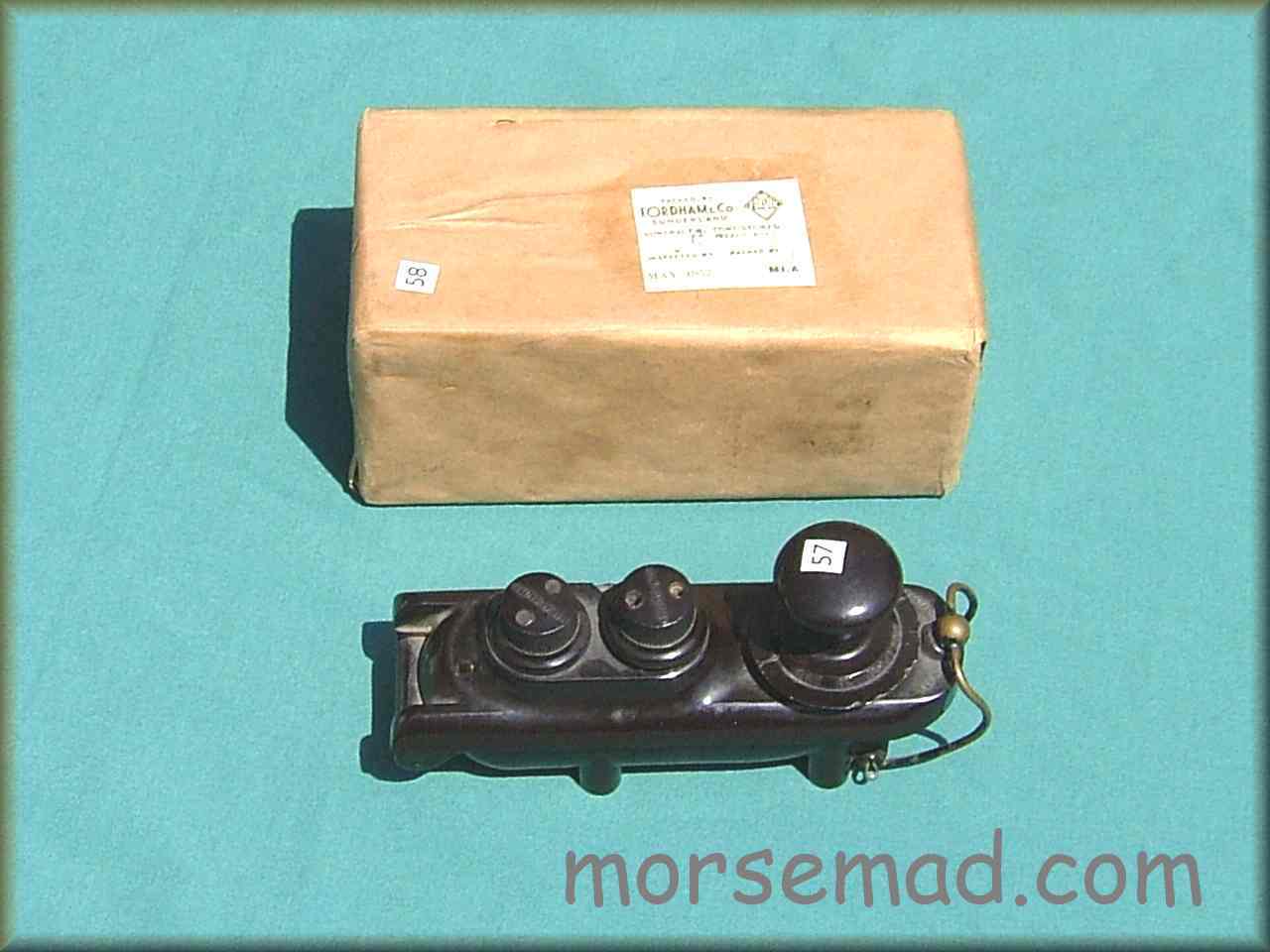 057-58..... Two RAF Type F Aircraft Keys. Commonly known as the Bathtub Key. One on display and one still in it's sealed box - Never Opened! These flameproof keys were used by the RAF in several aicraft - notably the Lancaster bombers of WW2.
057-58..... Two RAF Type F Aircraft Keys. Commonly known as the Bathtub Key. One on display and one still in it's sealed box - Never Opened! These flameproof keys were used by the RAF in several aicraft - notably the Lancaster bombers of WW2.

 047..... A piece of aviation history! A British Walters Key Type 5 KK Mk4 Serial No. 920. This actual key was fitted to the first jet airliner - construction No. G51 - the de Havilland Aircraft Co's prototype DH106 Comet "G-ALVG" belonging to BOAC (British Overseas Airways Corporation), first flight flown by Cunningham, Hatfield on the 27th July 1949. (See Morsum Magnificat magazine MM20, page 10).
047..... A piece of aviation history! A British Walters Key Type 5 KK Mk4 Serial No. 920. This actual key was fitted to the first jet airliner - construction No. G51 - the de Havilland Aircraft Co's prototype DH106 Comet "G-ALVG" belonging to BOAC (British Overseas Airways Corporation), first flight flown by Cunningham, Hatfield on the 27th July 1949. (See Morsum Magnificat magazine MM20, page 10).
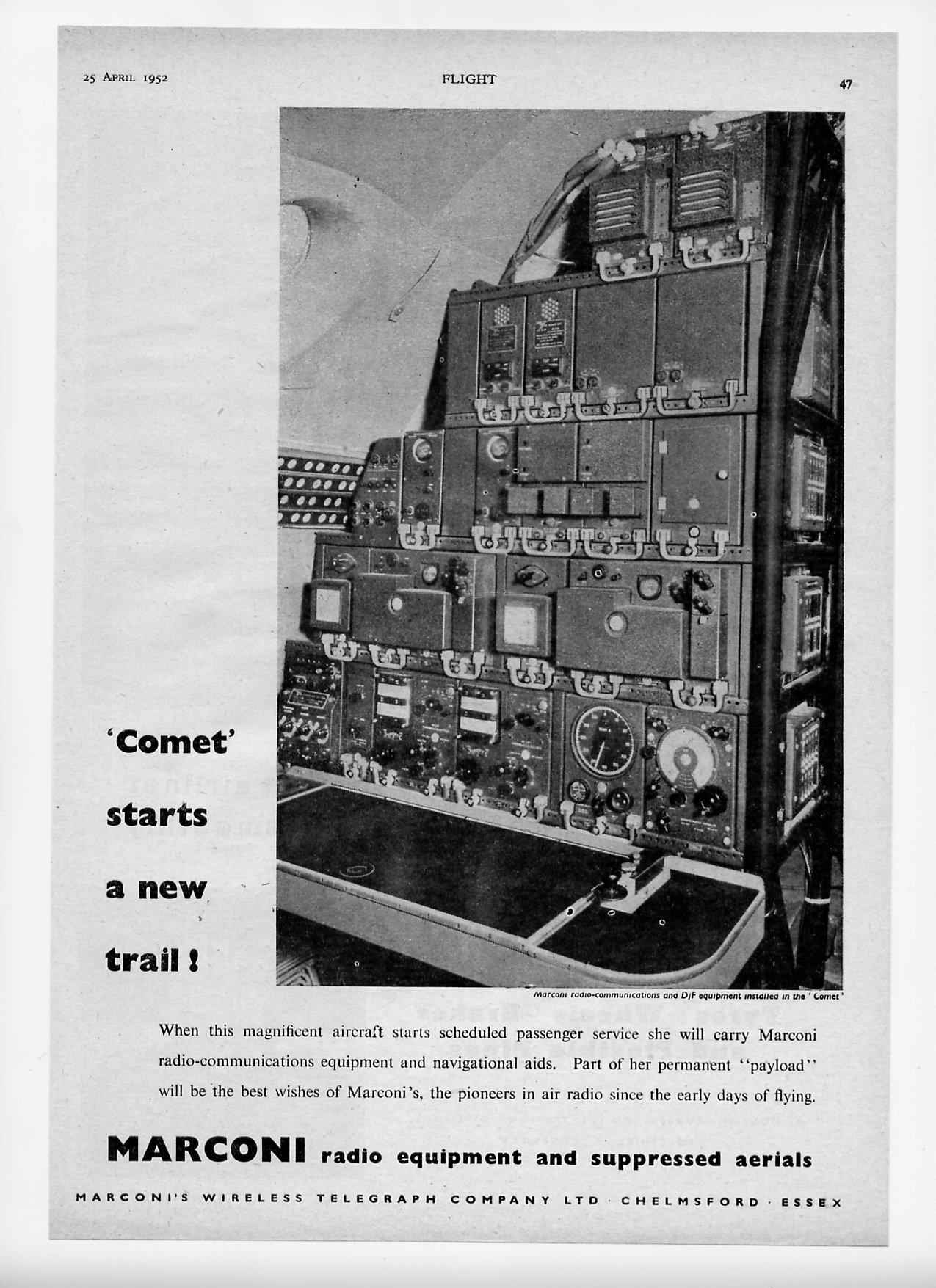 047B..... To the right is a page from FLIGHT magazine 1952.
047B..... To the right is a page from FLIGHT magazine 1952.
"Marconi radio-communications and D/F equipment installed in the Comet".
The key can be seen bottom right, on the operating table.
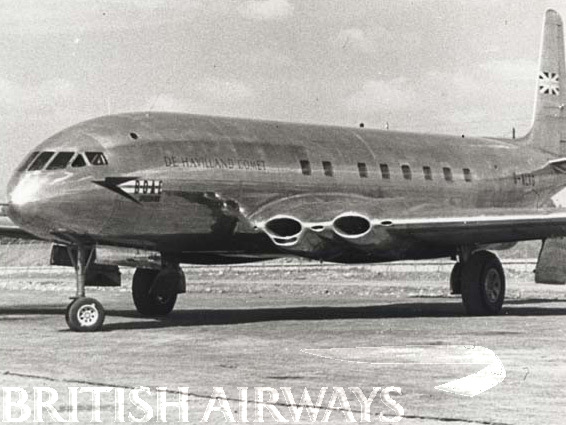 047C..... On the left is a photograph of this very jet airliner. The De Havilland Comet Prototype G-ALVG.
047C..... On the left is a photograph of this very jet airliner. The De Havilland Comet Prototype G-ALVG.

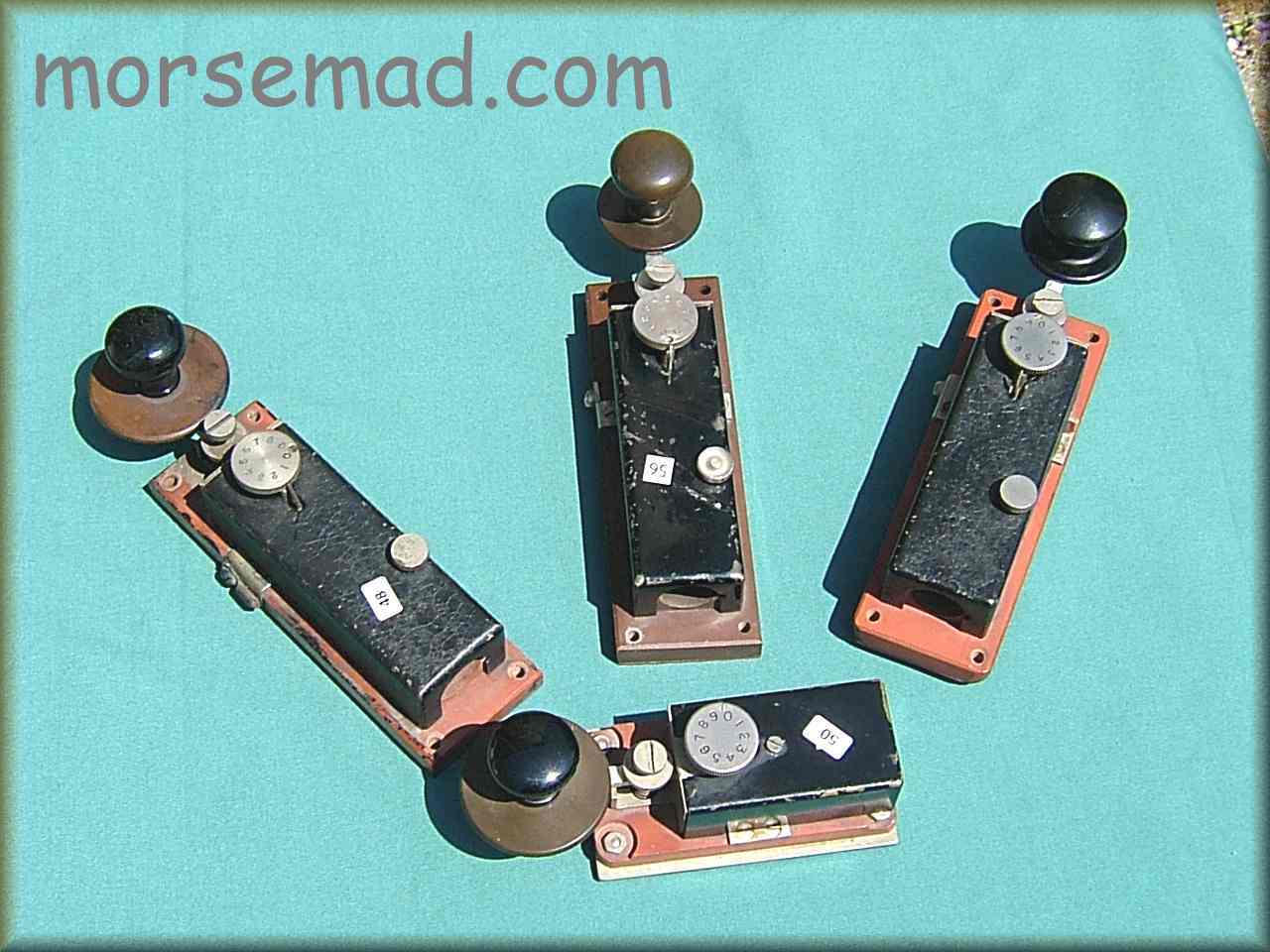 048-50-56..... A nice collection of keys. A Walters Type 5KK MkIV, two others and a smaller version in the model 7024. (See Morsum Magnificat magazine MM34, page 11).
048-50-56..... A nice collection of keys. A Walters Type 5KK MkIV, two others and a smaller version in the model 7024. (See Morsum Magnificat magazine MM34, page 11).

 149..... The classic MARCONI Air Ministry (A.M.) "D Type" Key. Designated 10F/7373. A fine big ground station key with large contacts.
149..... The classic MARCONI Air Ministry (A.M.) "D Type" Key. Designated 10F/7373. A fine big ground station key with large contacts.
Perhaps one of the most under valued keys in the collecting world, a magnificent morse key on a par with the Marconi Marine keys of the same era.
Early versions (rare) have "MARCONI'S WIRELESS TELEGRAPH Co. Ltd. No xxxxx LONDON" inscribed on the base, circa 1910, later ones have unmarked bases.
These keys usually have damage to the bakelite cover, so un-damaged, great condition ones are worth their weight in gold (Well - not quite).

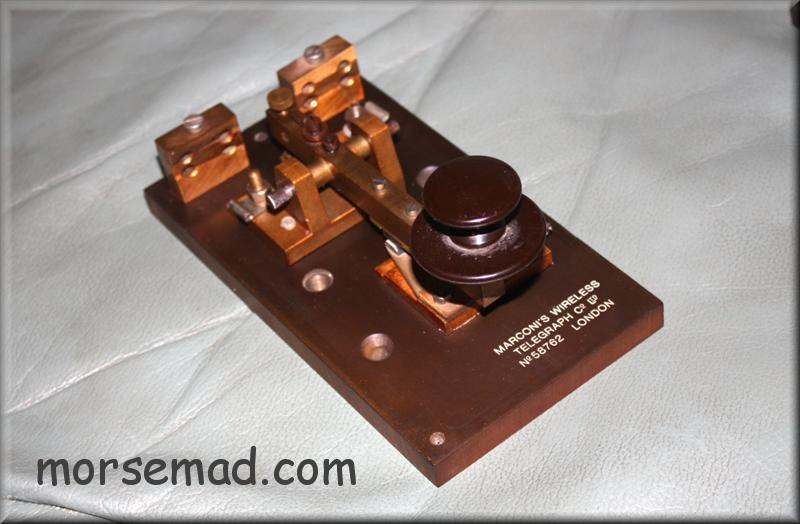 149b..... An early and rare MARCONI A.M. "D Type" Key inscribed "MARCONI'S WIRELESS TELEGRAPH Co Ltd. No 58762 LONDON".
149b..... An early and rare MARCONI A.M. "D Type" Key inscribed "MARCONI'S WIRELESS TELEGRAPH Co Ltd. No 58762 LONDON".
The number is not a serial number, but a production number. So this could give a clue as to the date manufactured.
Do you have one of these keys with the Marconi markings ? If so - please let me know.

 059.... .... Aircraft Key Type AM-10F/94 circa 1910. Marconi made. On the metal base is the Marconi model number P.S. 5785A.
059.... .... Aircraft Key Type AM-10F/94 circa 1910. Marconi made. On the metal base is the Marconi model number P.S. 5785A.

 062. ....Air Ministry Switch Box Identification. Type B 5c/372. Fitted to Hurricanes and Spitfire Fighter Aircraft during WW2 in the 1940's.
062. ....Air Ministry Switch Box Identification. Type B 5c/372. Fitted to Hurricanes and Spitfire Fighter Aircraft during WW2 in the 1940's.

 130..... British Brass RAF Morse Key. Type RAF No.1 Key. Circa 1918. Note the extra two smaller terminals and a bulb holder with bulb.
130..... British Brass RAF Morse Key. Type RAF No.1 Key. Circa 1918. Note the extra two smaller terminals and a bulb holder with bulb.

 147..... British Key Air Ministry Marconi Type B1 REF No 10F/7839 huge spark key in brass and bakelite circa 1910. Originally would have been fitted with a bakelite cover. Overall dimensions are 9 1/2" long by 4 1/2" wide and 3 1/2" high (243mm x 114mm x 89mm). Big silver (?) contacts on a springy plate just like the "D Type key. Used to key large spark transmitters. The earlier Type "B" had a brass cover.
147..... British Key Air Ministry Marconi Type B1 REF No 10F/7839 huge spark key in brass and bakelite circa 1910. Originally would have been fitted with a bakelite cover. Overall dimensions are 9 1/2" long by 4 1/2" wide and 3 1/2" high (243mm x 114mm x 89mm). Big silver (?) contacts on a springy plate just like the "D Type key. Used to key large spark transmitters. The earlier Type "B" had a brass cover.
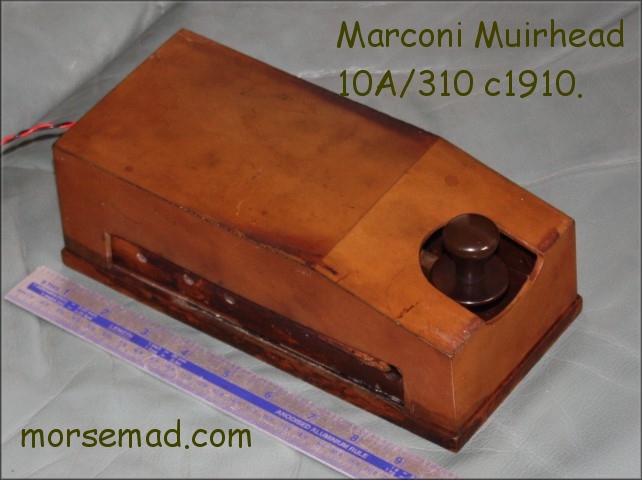 147B..... Air Ministry Base Station Marconi Type B1 REF No 10A/310 spark key with bakelite cover. c 1910. Used with spark transmitters. This example was manufactured for Marconi by Muirhead & Co Ltd.. No 63843. Ref No 10A/310. Bakelite covers for these big spark keys rarely survive the many years of use.
147B..... Air Ministry Base Station Marconi Type B1 REF No 10A/310 spark key with bakelite cover. c 1910. Used with spark transmitters. This example was manufactured for Marconi by Muirhead & Co Ltd.. No 63843. Ref No 10A/310. Bakelite covers for these big spark keys rarely survive the many years of use.

 109..... British Brass Key. Marked RAF 2533 (designation 10F/2533) circa 1918. Wyn Davies provides this info: "Once sold as WW I surplus by Dixon's of London. Some were plated brass with designation 10F/2533 and the RCAF had the exact key with a different knob designated 10A/556.
109..... British Brass Key. Marked RAF 2533 (designation 10F/2533) circa 1918. Wyn Davies provides this info: "Once sold as WW I surplus by Dixon's of London. Some were plated brass with designation 10F/2533 and the RCAF had the exact key with a different knob designated 10A/556.

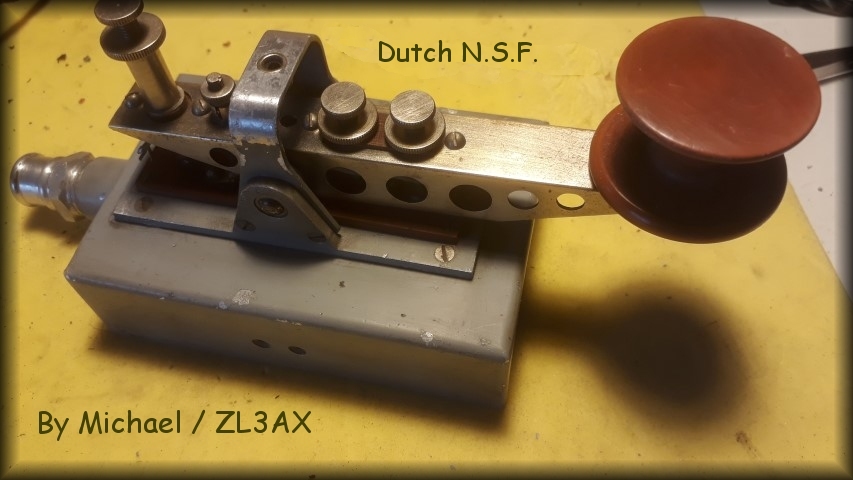 124..... Michael / ZL3AX sent me this interesting photo of a key in his collection. A Dutch key made by N.S.F. Nederlandsche Seintoestellen Fabriek. (Dutch signal equipment factory). Info thanks to Jan / PA3EGH.
124..... Michael / ZL3AX sent me this interesting photo of a key in his collection. A Dutch key made by N.S.F. Nederlandsche Seintoestellen Fabriek. (Dutch signal equipment factory). Info thanks to Jan / PA3EGH.